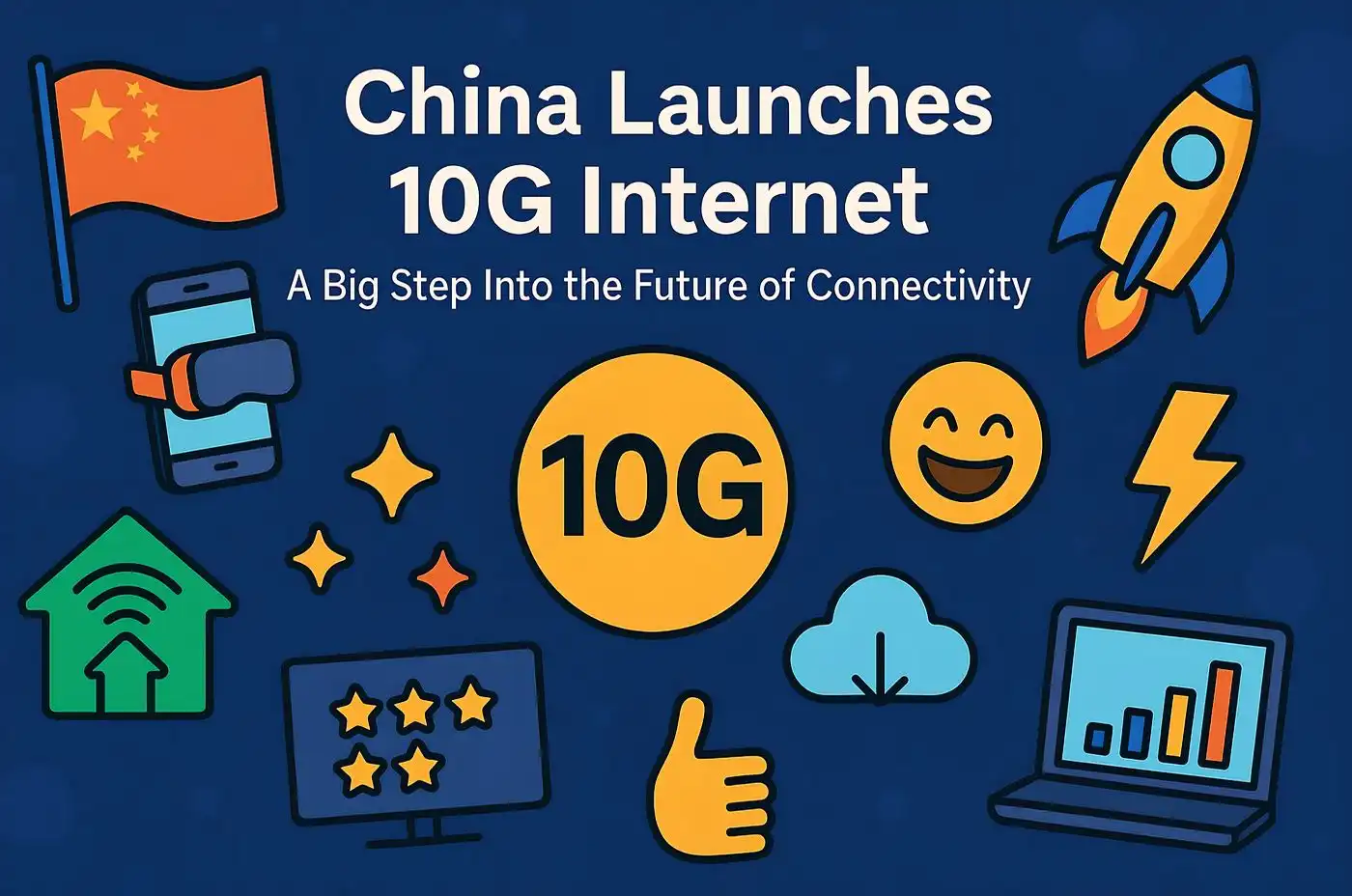China Launches 10G Internet! How will the EU compete?
China’s 10G Internet Development Compared to the European Union
As the global demand for ultra-fast internet connectivity grows, nations are racing to roll out next-generation broadband infrastructure. Among the frontrunners in this digital race is China, which has aggressively pushed toward 10G (10 Gigabit per second) internet technology. Meanwhile, the European Union (EU), though highly developed and digitally sophisticated, has taken a more cautious and fragmented approach. This essay examines the current state of 10G internet development in China and compares it to the EU’s efforts, analyzing key areas such as technological advancement, investment strategies, regulatory environments, and deployment timelines.
Video Credits To: https://www.youtube.com/@TeqnoVerses
Understanding 10G Internet
10G refers to broadband networks capable of achieving download speeds of up to 10 gigabits per second. Unlike traditional gigabit internet (1G), 10G networks enable faster downloads, ultra-low latency, and the capacity to support next-gen applications like 8K streaming, virtual and augmented reality, autonomous vehicles, and the Internet of Things (IoT). While still in the early stages of mass rollout, 10G is considered a cornerstone of future digital infrastructure.
China’s Push Toward 10G Internet
China has a track record of rapid and large-scale technology deployment, and its approach to 10G follows this pattern. Spearheaded by the Ministry of Industry and Information Technology (MIIT), Chinese telecom giants like China Mobile, China Telecom, and China Unicom have made major investments in upgrading their networks.
In early 2024, China successfully launched several pilot projects demonstrating 10G technology in urban areas such as Beijing, Shanghai, and Shenzhen. These trials primarily use XGS-PON (10-Gigabit Symmetrical Passive Optical Network) and FTTH (Fiber to the Home) technologies, providing symmetrical upload and download speeds—critical for applications like cloud gaming and video conferencing.
China’s state-led model allows for swift implementation. For instance, the government set aggressive targets under its “Digital China” strategy, aiming to upgrade internet infrastructure in 80% of major cities to 10G by 2027. The country also benefits from a robust supply chain of domestic networking hardware manufacturers like Huawei and ZTE, who are major suppliers of 10G equipment both domestically and internationally.
EU’s Gradual Rollout of 10G Internet
In contrast, the European Union faces a more fragmented landscape. With 27 member states, varying degrees of digital readiness, and differing national regulations, the EU’s rollout of 10G internet has been more cautious and less uniform.
The European Commission’s “Gigabit Infrastructure Act” seeks to coordinate and accelerate the deployment of gigabit networks across the EU. However, as of 2025, most EU countries are still focusing on achieving full 1G (gigabit) coverage, with 10G mostly limited to research, pilot zones, or niche commercial offerings in major urban centers like Stockholm, Berlin, and Amsterdam.
Several European telecom providers, including Deutsche Telekom, Orange, and Vodafone, are experimenting with XGS-PON technology, but rollout is slow due to high infrastructure costs, regulatory complexity, and the need for multi-stakeholder coordination. Funding is available via EU mechanisms like the Connecting Europe Facility (CEF) and Recovery and Resilience Facility (RRF), but uptake and implementation vary widely across member states.
Key Differences Between China and the EU
1. Centralization vs. Decentralization
China’s centralized governance model enables rapid decision-making and nationwide rollout strategies. In contrast, the EU’s decentralized nature means that digital infrastructure development is often led by national governments and subject to local constraints. This results in disparities in connectivity between countries and even within regions of the same country.
2. Investment Scale
China’s state-owned telecom operators benefit from coordinated investment strategies and are often subsidized by the central government. The EU relies more heavily on private investment, which can be hesitant to fund costly fiber upgrades in low-return rural areas. As a result, China has been quicker to deploy fiber-optic networks necessary for 10G speeds.
3. Manufacturing Ecosystem
China’s domestic tech ecosystem, particularly in network hardware and fiber-optic components, is more self-reliant. The EU still depends significantly on foreign suppliers, although companies like Nokia (Finland) and Ericsson (Sweden) are important players in the global telecom market. China’s capacity to mass-produce 10G hardware contributes to faster and more cost-effective deployment.
4. Consumer Readiness and Market Demand
China’s urban population, mobile-centric culture, and high digital consumption drive demand for faster broadband. In the EU, while internet penetration is high, consumer demand for 10G speeds is not yet widespread, limiting the commercial incentive for ISPs to upgrade infrastructure quickly.
Challenges and Opportunities
In China:
- Challenges: Despite rapid deployment, challenges persist, such as ensuring rural coverage, addressing cybersecurity concerns related to central control, and managing international skepticism around Chinese network technologies.
- Opportunities: China stands to gain first-mover advantages in digital services, smart city infrastructure, and global influence through export of 10G technology and expertise.
In the EU:
- Challenges: Bureaucratic hurdles, funding gaps, and fragmented regulatory environments hinder progress. Ensuring equitable access across all member states remains a challenge.
- Opportunities: The EU has a chance to leapfrog by learning from early adopters, coordinating through digital policy frameworks, and leveraging sustainability goals to push for green fiber deployments.
Global Implications
The competition between China and the EU in 10G internet deployment is not merely technical—it reflects broader geopolitical and economic dynamics. China’s rapid progress showcases its ambition to lead the digital economy, while the EU’s more measured approach underscores its emphasis on privacy, digital sovereignty, and regulatory oversight.
This digital divide may impact future innovation competitiveness. For instance, China’s head start in ultra-fast connectivity could give it an edge in AI, IoT, and cloud computing industries, while the EU risks lagging behind unless it accelerates investment and removes structural barriers.
China has emerged as a global leader in the early deployment of 10G internet, thanks to centralized governance, aggressive investment, and a robust manufacturing base. The European Union, while advanced in many aspects of digital policy, faces significant hurdles in matching China’s pace, primarily due to its decentralized structure and uneven infrastructure readiness.
For the EU to catch up, greater coordination, investment in fiber-optic infrastructure, and policy alignment among member states will be essential. Meanwhile, China’s experience offers valuable lessons in scaling next-generation internet, albeit with different governance and market dynamics.
The future of global digital leadership will likely depend on how well each region manages the challenges and capitalizes on the opportunities presented by the 10G era.













